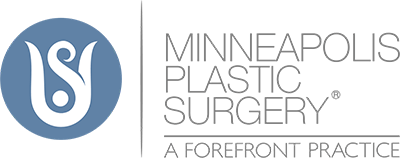Timing of Breast Augmentation and Other Important Information
Many women wonder if they should wait until their family is complete before undergoing breast augmentation. Certainly, pregnancy and breast-feeding change the breast skin, shape, and size; these are common reasons many women choose to have breast augmentation surgery at our Minneapolis / St. Paul area clinic. As leading breast surgery experts in Minnesota and the upper Midwest, our staff works closely with patients during the breast implant surgery decision-making process.
Should a woman who has not yet had a child (but plans to in the future), or a woman who wishes to have more children later, undergo augmentation mammoplasty?
If your breast development is complete and you have had breast enlargement surgery, and then later become pregnant and breast-feed, your breasts will indeed change in appearance, just as they do in a woman who has larger breasts naturally, becomes pregnant, and nurses her baby. Since breast implants are in most cases beneath the chest (pectoralis major) muscle, and in all cases beneath the breast itself, the presence of implants does not interfere with the function of the breasts. Whatever breast tissue a woman has prior to breast enlargement surgery will swell and respond to the normal hormonal changes of pregnancy and later breast-feeding. The degree of enlargement, skin stretch, and later droop or sagging is as individual as each woman. A patient who had breast augmentation prior to pregnancy may choose to undergo a breast lift when her family is complete, just as the woman without breast implants. Others may simply choose a slightly larger implant to further fill the stretched skin brassiere. Or, you can indeed wait until your family is complete, and then undergo breast augmentation surgery, or augmentation plus breast lift (mastopexy) if a lift is needed in addition to restoring volume.
What you need to know is that it is safe and appropriate to choose either way, whichever is best for you. The breast augmentation experts at Minneapolis Plastic Surgery, Ltd. offer decades of experience with thousands of patients considering breast enlargement, breast lift (mastopexy), breast lift plus implants, or breast implant revision at our nationally-accredited (AAAASF) in-office surgical facility in Golden Valley, Minnesota.
Breast Feeding
Breast augmentation does not generally affect the ability to breast feed. One study shows that about 54 percent of women without implants reported problems nursing. 93 percent of breast augmentation patients had their children before undergoing the procedure, so nursing was not an issue. Of the 7 percent who had children and nursed them after augmentation, 50 percent reported problems, essentially the same number as those without implants.
Some surgeons have postulated that if a periareolar (around the dark part of the nipple) incision is chosen, a smaller percentage of women will preserve the ability to breast feed. This is because as many as half of the ducts to the nipple (and some branches of the sensory nerve to the nipple area) are severed by this incision. If you have never breast-fed and undergo augmentation (regardless of incision chosen), you will, in the majority of cases, retain whatever breastfeeding capability you had prior to surgery. Most women who have breast-fed prior to undergoing breast augmentation have successfully been able to nurse again after augmentation mammoplasty. However, as noted in the study above, many women are not capable of breast-feeding (irrespective of breast size), and these patients will still be unable to nurse a baby after breast augmentation surgery, regardless of incision placement.
If you have fibrocystic mastitis (this is not a “disease” since about half of all women have fibrocystic changes in their breasts) you may note tenderness or swelling in your breasts prior to your menstrual cycle. Augmentation mammoplasty does not change this for the better or worse in most cases, but it is advantageous for all breast augmentation patients to consider a surgery date that is just after your period rather than just before, in order to reduce pain, swelling, or bleeding tendency with your surgery. This, in turn, can reduce the risks of developing capsular contracture in certain patients.
Choice of Breast Augmentation Incision
There are four types of incisions used for breast augmentation surgery: axillary (armpit), periareolar (around the areola — the dark skin surrounding the nipple), umbilical (belly button), and inframammary (in the skin crease under the breasts). Each of these choices has pros and cons; some surgeons use some or all of these options, whereas others have a preference based on training, experience, or habit.
Skin and Nipple Sensation after Surgery
Regardless of incision choice, creation of the surgical pocket for the implant will unavoidably cut some of the tiny sensory nerves to the breast skin, and skin sensation will be diminished or absent in the areas these nerves supply. Over time, sensation will generally recover as nerves heal, but may not return to 100 percent of preoperative sensation. Note that this has nothing to do with nipple erectility (response to cold or stimulation), as different nerves are responsible for this response.
In a few cases, depending on your own particular anatomy, the nerve or nerve branches to the nipple-areola region may also be cut during the surgical pocket creation, and you will permanently lose sensation to the nipple-areola complex on that side. About 5-10 percent of women will lose nipple-areola sensation with augmentation alone, and about 15 percent will lose nipple-areola sensation if a breast lift is necessary. Again, incision choice can affect these statistics: a higher number of women may lose nipple sensation with a periareolar or axillary (armpit) incision.

